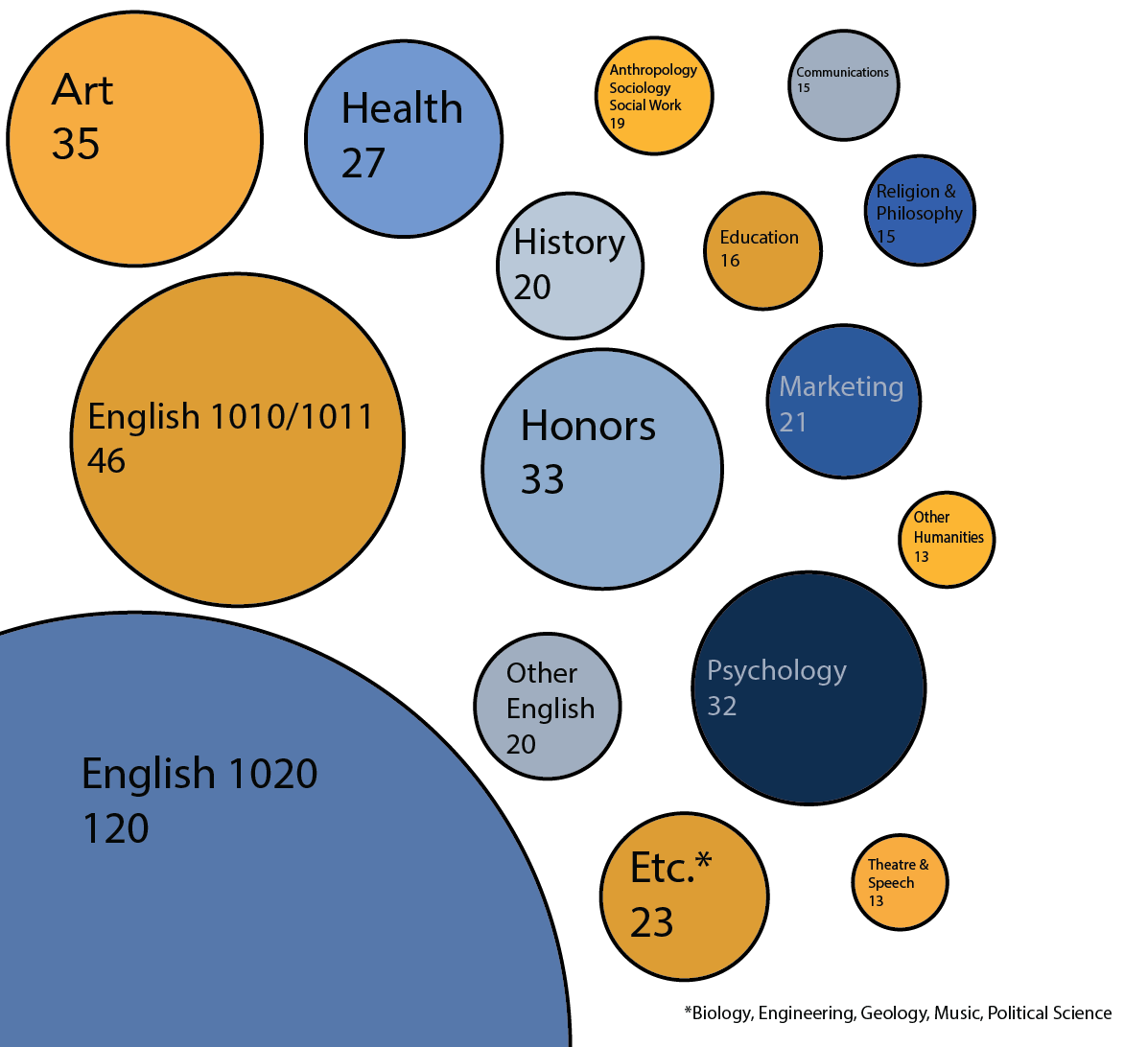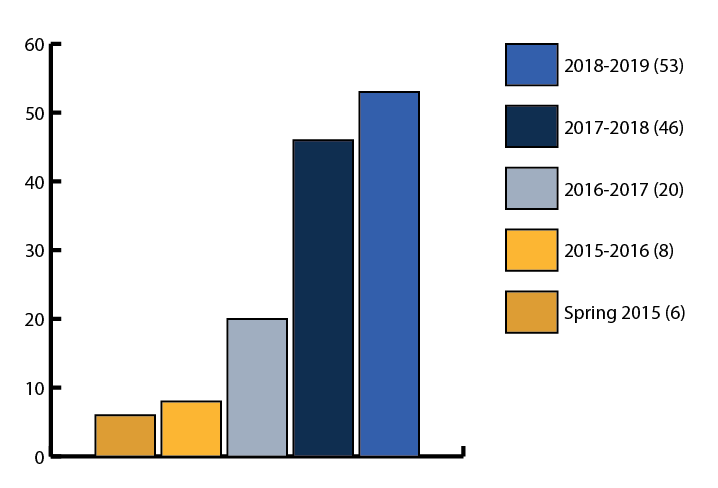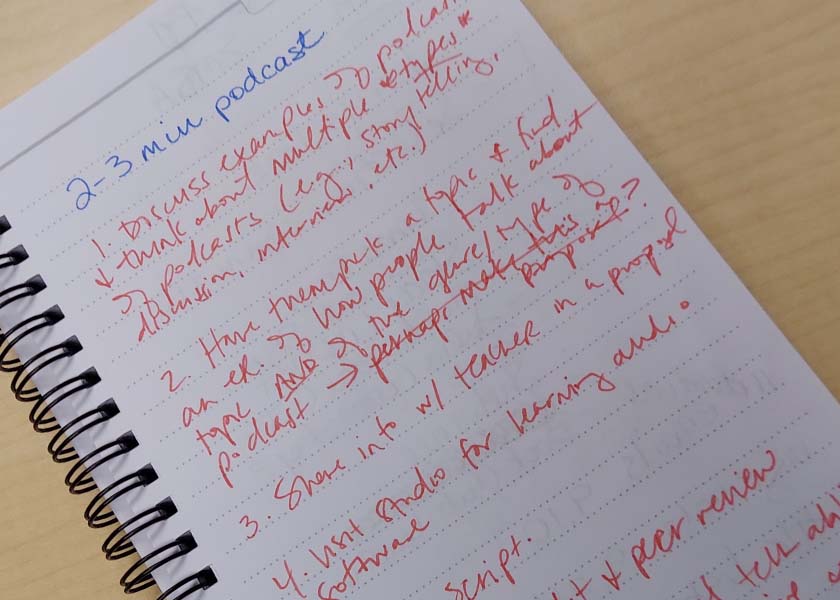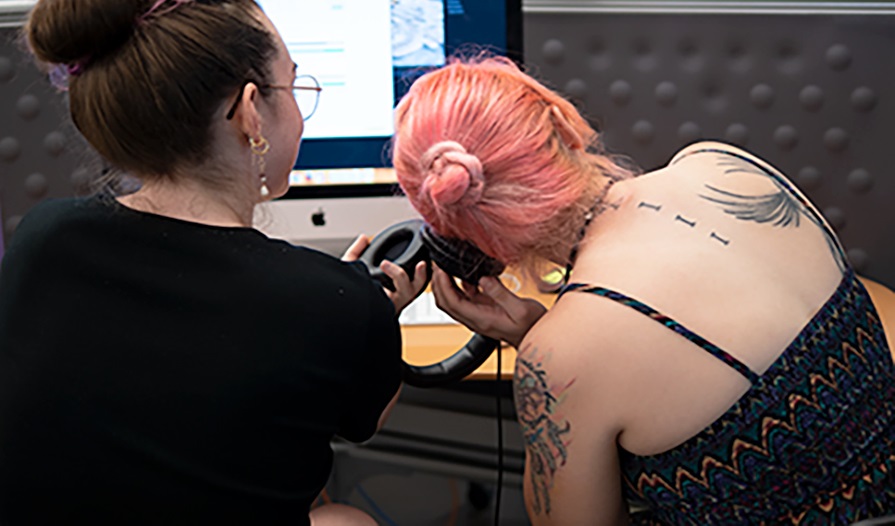"If the Studio had not been available, I would have been much less inclined to undertake a project like this because it would have been so much more work for me. Because I first had to educate myself on how to do this. When you're in the middle of the semester, and you're taking three classes, and you're doing 20 million things, you don't necessarily have that quality time. I feel like I would have much more half-assed it without the Studio support. So the Studio being there and having these resources is what made doing this project possible for me." Tracy Tabaczynski, UTC Adjunct Faculty
As with any functioning partnership, our moves to reflect on our process taught us about our own writing program and Library Studio, as well as highlighted practices that other writing programs and libraries may consider emulating or adapting for their own institutional contexts.
About Ourselves
In a writing program the size of ours, it is not uncommon for faculty to have a range of comfort and understanding about core programmatic concepts, particularly when several of the faculty do not have as much pedagogical grounding in rhetoric and composition. After workshops, professional development sessions, mentoring, and training, our research shows that our faculty still have both a broader, ranged definition of multimodal composition, and some faculty even misunderstand the purpose of the rhetoric and writing classroom itself. From a WPA perspective, this finding indicates a need for clearer programmatic direction about the purpose and function of the multimodal element in ENGL 1020.

The work of this project made Jenn realize that starting small with the phrase "multimodal element" was useful to generate buy-in but resulted in the faculty having a too broad definition of multimodal composition. As this initiative progresses, she intends to hold more professional development sessions dedicated to defining and honing the multimodal composition incorporation into the Writing Program.
This project confirmed a lot of the things that Emily tends to espouse when trying to convince faculty to use studio librarians as a resource: Students need help with software, they like the projects, faculty appreciate having someone to help them through the process, and so forth. She found it interesting to learn the variety of non-multimedia projects faculty were including and how they would tie them into their classes. She also thought it was interesting that many faculty do not realize the amount of multimodal work students are doing across their whole curriculum. She plans on trying to better advertise the work touched by the Studio across campus.
To Help Others
We recognize that institutional contexts may vary too much for our individual site findings to provide direction or guidance to other programs. However, in conducting this research, we found elements that WPAs and librarians could take into account and use if they worked toward a partnership at their own institutions.
Build relationships professionally and symbiotically, if not organically.
That Emily and Jenn generally like each other is significant; there is a foundation of friendliness that underlies their working relationship that often smooths any rough edges. That said, the respect that exists between professionals also serves as a foundation to this symbiotic partnership. The UTC Writing Program is large, and working with it brings traffic into the Studio while students are freshmen; they are more likely to reengage with the Studio in their academic career if they build a comfort with that service early. Similarly, the studio librarians support the Writing Program faculty in the development of their multimodal assignments and instruction of technology in a way that the Writing Program itself could not.

Start small and generate buy-in.
Incorporating new initiatives in a writing program requires a strategic approach to helping faculty adjust or hone their pedagogy. Because Jenn worked with Emily when creating her own multimodal projects, and Emily's feedback was rooted in her own experience working with faculty on multimodal projects, they could better anticipate the needs of the writing faculty as they developed or modified projects to include a multimodal element. Additionally, the use of the phrase "multimodal element" is key as it allows for pedagogical flexibility: An instructor who is resistant or hesitant to teach an entirely new multimodal project could instead begin by taking small steps and asking students to add a multimodal element to an existing project. In the span of the four years that this initiative has existed, we have seen some faculty move from "add images to your research project" to "develop an infographic in Canva" to "Let's try a podcast," growing and expanding their own multimodal composition pedagogy over the course of time.

Reflect and provide feedback frequently.
Meeting with stakeholders to identify potential problems and propose solutions is also key. Emily and Jenn met with each other and/or various writing faculty and library faculty countless times throughout the development of this initiative. They continue to meet at least once a year to check-in and ensure that both organization's needs are being met and that the initiative is progressing. Surveying the writing faculty not only provided the impetus for this Kairos webtext but also highlighted areas within the Writing Program and Library Studio that needed attention or support.
